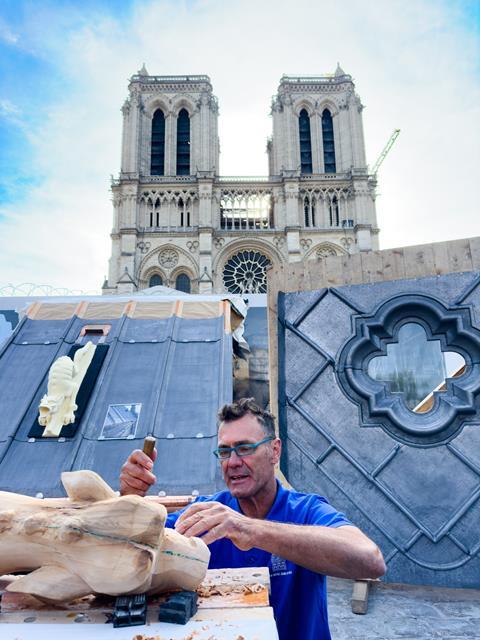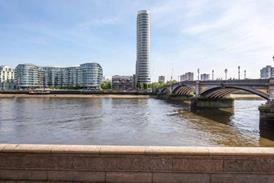Five years after the fire that devastated Notre Dame, the cathedral has reopened to the public. Liz Smith discusses the monumental restoration effort, from the revival of ancient woodworking techniques to the controversies surrounding the interior cleaning, and what it reveals about the enduring value of our architectural heritage.

Parisians, the French, and the world once again celebrated the extraordinary beauty of the Notre Dame de Paris Cathedral this weekend. Five years after it was devastated by fire, it hosted an official opening ceremony on Saturday, with public masses returning to the cathedral from Sunday.
The restoration, which began almost immediately following the fire, has been taken so seriously nationally that President Macron appointed an army general to lead it. Following the unexpected death of General Jean-Louis Georgelin in 2023, Philippe Jost has led the public establishment responsible for conservation and restoration (Rebâtir Notre-Dame de Paris) alongside chief architect Philippe Villeneuve.
Leading with such rigour ensured the cathedral reopened to the public on schedule. The ambitious restoration continues towards full completion in 2026, with a transformational public realm landscape project due to complete in 2027.
A reconstructed spire, identical to the 1859 version, was revealed earlier this year. Between 1845 and 1867, the cathedral was extensively remodelled by architect Eugène Viollet-le-Duc, who added the spire to the medieval building, replacing the original Gothic one removed in the 18th century.
Though many designers prepared alternative proposals, losing such a symbol of stability was considered a trauma, and the decision to resurrect Viollet-le-Duc’s spire was made specifically to support the healing of both the building and the global community. This demonstrates the value and power of the architectural identity we attribute to our monuments and landmarks.
The reopening of the cathedral this weekend revealed that the pale, creamy colour of the historic stone walls and vaults of the interior has been restored, removing the extensive soot and staining from the fire, as well as centuries of liturgical smoke and city pollution blackening. The awe visitors to the cathedral would have experienced in the 14th century has been recreated, but the interior cleaning is causing shock and debate.
>> Also read: President Macron tours restored Notre Dame ahead of public reopening
Speaking in September, Villeneuve said that his intention was that the cathedral would be “luminous”. It certainly is, but in an era when patina carries an age value that many appreciate as reflecting antiquity, the interior cleaning at Notre Dame could prove too much for hardcore conservationists.
The cleaning has involved the application of a latex paste to the interior stonework, which is peeled off after a few days, bringing with it accumulated dust and dirt. This poultice is similar to the Arte Mundit product specifically formulated for cleaning Portland stone during the interior restoration of St Paul’s Cathedral in London 20 years ago.
Investing in the future of heritage is crucial because we love and cherish it, and also because it is a vital part of our national economic model
The decisions made at St Paul’s tackled a similar challenge, where conservation grappled with not just practical and aesthetic issues but also spiritual ones. This great church requires a beautiful interior that makes you stop, fall quiet in inspired awe, and reflect.
In the aftermath of the fire in 2019, the efforts to rebuild Notre Dame called for people with traditional skills, especially in stonemasonry and carpentry. By March 2024, the entire roof frame of the 13th-century oak beam structure had been identically reconstructed by 21st-century carpenters trained in the traditional technique of working freshly harvested “green wood” by hand with an axe, with each oak beam hewn from an individual tree.
After generations of mechanisation, this ancient skill had almost disappeared in France, but an association called Charpentiers sans Frontières (Carpenters without Borders) began promoting its revival in 1992. More than 60 carpenters joined the project, including several international recruits. Custom-made axes were produced for the task, putting the hand of the craftsman at the centre of the restoration strategy.
It is tragic that we are forced to rely on disasters for opportunities to train new master craftspeople in bringing back the skills that created the landmarks we have inherited. But at Notre Dame, we have seen traditional skills marry with digital advancements. While handcraft was essential for the restoration, the workshops’ traditional manual skills were guided by digital design tools. Computer modelling supported long-term sustainability to ensure the timbers of the roof will now endure for several centuries into the future.

Active learning of skills and techniques that have been in existence for hundreds of years, and the knowledge of materials and crafts that made our heritage, are also the keys to preserving and protecting it. By training future generations in traditional crafts such as stonecutting and wood carving, I believe there will be a more ingrained respect for the creativity and skill that is embodied in these fine buildings.
As one of the city’s principal landmarks, the cathedral welcomed 13 million visitors from across the globe every year before the fire – a number expected to reach 15 million following its reopening at the weekend, with a more tourist-friendly route and visitor-focused representation.
Notre Dame de Paris is a UNESCO World Heritage Site. In the UK, the historic sector employs around half a million people and attracts millions of domestic and international tourists. Investing in the future of heritage is crucial because we love and cherish it, and also because it is a vital part of our national economic model.
When the Notre Dame fire broke out in 2019, it was as though part of the soul of Paris was in flames. The media proclaimed it a national disaster, speaking to the enormous value heritage assets have in relation to our sense of collective identity. Its restoration is a monumental achievement of the 21st century.
>> Also read: Notre-Dame ‘will be rebuilt’ after devastating fire
>> Also read: Rebuild the Mack, but why stop there?
Postscript
Liz Smith is a conservation architect. She is chairman of Purcell and the regional partner for London and the South East.
















No comments yet